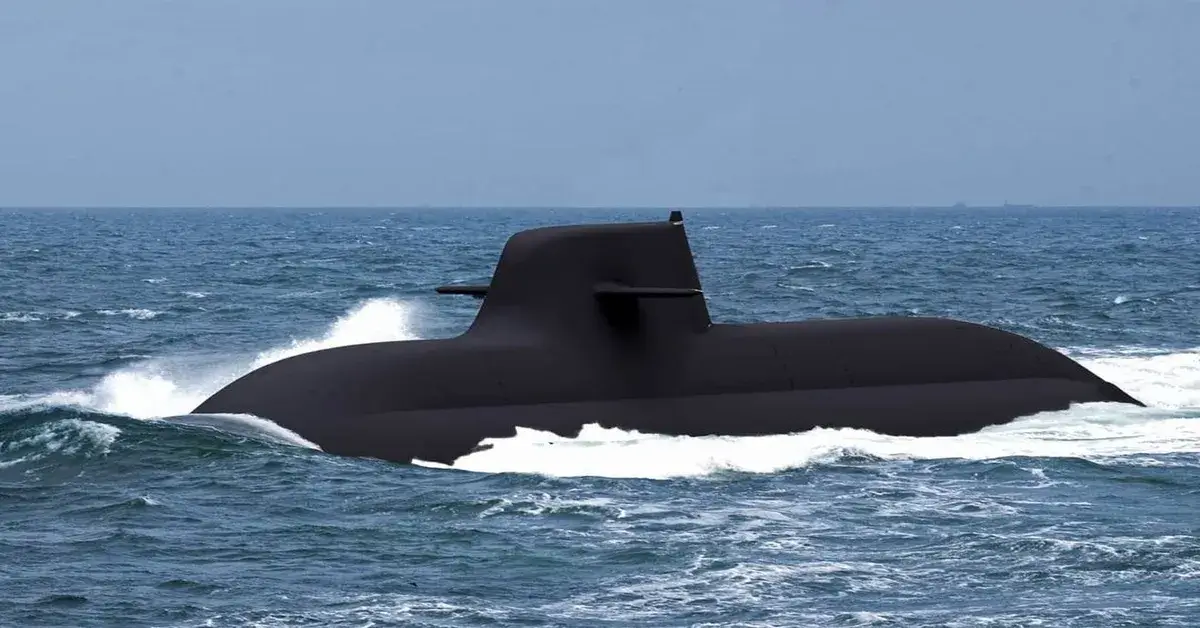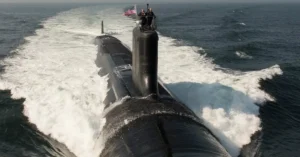In this Guide, we will discuss the fascinating world of submarine races. We will touch upon their existence, slang meaning, locations, and the origins of successful submarines.
In international submarine races, we witness a variety of human-powered submarines competing for top honors. These races showcase cutting-edge marine engineering design and often inspire the next generation of ocean engineers and scientists. To help you better understand the world of submarine races, let’s look at the different types of submarines that typically participate in these competitions.
By learning about the diverse submarine designs and technologies showcased in races, we can gain a new appreciation for the incredible feats of engineering and teamwork on display. We hope this overview has piqued your curiosity – to learn more about upcoming submarine races & racing events or how you can get involved – be sure to check our Guide extensively.
History of Submarine Races
We’re excited to share our knowledge of the fascinating world of submarine races. In this brief article, we will dive into the history of these unique competitions. You’ll quickly understand how these races have evolved and the transformations they’ve undergone to become what they are today.
Early Inceptions
The concept of submarine races goes way back in history. One of the earliest instances of a submarine-like craft was the Turtle in 1776, during the Revolutionary War. The Turtle, powered by Staff Sergeant Ezra Lea, attempted to sink a British flagship, HMS Eagle, in New York City harbor by delivering an explosive charge through a hole drilled in the hull. The submarine worked despite its failure due to the copper cladding, marking a starting point in underwater maneuvering.
Modern Transformations
Fast-forwarding to modern-day events, biannual International Human-Powered Submarine Races have occurred in numerous locations, such as the Naval Surface Warfare Center in West Bethesda, Maryland. These races involve human-powered submarines, showcasing the next generation of engineering and design.
Submarine races have also evolved into different formats, like drag racing. These competitions happen in lakes, rivers, and other large bodies of water where the required space for racing is available. The races feature two or more boats racing against each other in a straight line, testing the capabilities and speed of the modern submarine.
Today’s submarine races continue to push the boundaries of engineering and design. With human ingenuity and drive to excel, we can expect even more exciting developments soon.
Introduction

In international submarine races, we witness a variety of human-powered submarines competing for top honors. These races showcase cutting-edge marine engineering design and often inspire the next generation of ocean engineers and scientists. To help you better understand the world of submarine races, let’s look at the different types of submarines that typically participate in these competitions.
Types of Submarines in Races

Submarines participating in races generally fall into one-person and two-person submarines. Each type of submarine has its unique design challenges and advantages.
One-person submarines are more compact and typically faster, as they’re built for a single crew member who powers the submarine using their muscle strength. These submarines prioritize speed and maneuverability, making navigating the racecourse easier for the person on board.
One example of a one-person submarine race is the International Submarine Race, which involves human-powered submarines often built by teams of students and engineers.
Two-person submarines are more significant and can accommodate a pair of crew members, usually with one person focusing on propulsion while the other handles navigation. These submarines often demand more engineering expertise, as they must balance improved speed with increased weight and size. Teamwork is essential in ensuring a smooth and efficient race experience in two-person submarine races.
In both types of submarines, crew members usually wear SCUBA gear and breathe air from a tank, making these submarines “wet” submarines. Participating submarines incorporate materials and technologies to enhance further performance, such as lightweight composite materials, advanced propulsion systems, and innovative hull designs.
Submarines can also be classified by their method of propulsion, such as pedal-powered submarines, where the crew operates a bicycle-like mechanism, or swim-powered submarines, which imitate the swimming motion of a fish. Each propulsion method has its unique design challenges, and teams often strive to create inventive solutions to maximize efficiency and performance.
In conclusion, submarine races showcase fascinating designs and technologies, with one-person and two-person submarines tackling diverse challenges in propulsion, efficiency, and maneuverability. By exploring the various types of submarines in these races, we gain a deeper appreciation for the skill and innovation that goes into these unique marine vessels.
Famous Submarine Races

Submarine races have captivated the world for decades, serving as a thrilling sport and an important showcase of technological advancements in the underwater realm. This section will briefly explore two of the most famous submarine races that have shaped and defined the underwater racing scene for generations.
The Cold War Submarine Races
During the Cold War, the United States and the Soviet Union were engaged in various forms of competition, both militarily and technologically. One aspect of this rivalry was the development of their respective submarine fleets. These advanced underwater vessels were constantly upgraded and improved, leading to a technological race between the two superpowers.
The Cold War submarine races were not traditionally held as a sporting event but as a constant display of technological progress and military prowess. The U.S. Navy’s fleet of submarines, including the world’s first nuclear-powered submarine, the USS Nautilus, and the Soviet Navy’s impressive line-up, such as the Kursk, pushed the boundaries of submarine engineering and shaped maritime history.
Contemporary Competitions
As the times have changed, so too have the submarine races. The focus has shifted away from military dominance to academic progress and scientific development. A well-known event in this sphere is the International Submarine Race (ISR), a human-powered submarine race that has taken place for over 25 years.
Sponsored by the Foundation for Underwater Research & Education (FURE), the ISR is a Science, Technology, Engineering, and Mathematics (STEM) event that sees young men and women participating in teams to design and build their submarines. Showcasing innovation and creativity, these races have quickly gained popularity and are instrumental in inspiring the next generation of submariners, engineers, and scientists.
Today’s submarine races demonstrate how far we’ve come in underwater exploration and technology. From the high-stakes, clandestine races of the Cold.
Impact and Significance of Submarine Races

Submarine races have been notable since the beginning of the Cold War, showcasing the military prowess of the world’s superpowers in an ongoing rivalry1. These races have evolved, with many now focusing on the development and innovation of human-powered submarines. In this section, we will discuss the impact and significance of submarine races and their role in promoting advancements in marine engineering and technology.
The International Submarine Races (ISR) were created to address the emerging need for skilled professionals in the ocean and marine engineering fields. These races provide a platform for participants across various educational levels to design and develop one or two-person “wet” submarines, allowing crew members to breathe through SCUBA equipment. Competing in these races inspires creative and innovative designs, preparing future generations for careers in marine engineering.
In addition to promoting innovation professionally, submarine races have a rich history as recreational events in large bodies of water, such as lakes and rivers. These races typically involve two or more boats racing against each other in a straight line, providing a unique and thrilling experience for spectators and participants. The competitions often draw large crowds, fostering camaraderie and friendly competition among teams and fans.
Furthermore, hosting submarine races at esteemed institutions, such as the Naval Surface Warfare Center Carderock Division, highlights the importance of collaboration and real-world application in marine engineering4. Competing at these events introduces high-caliber participants to industry experts, opening the doors to professional growth and networking opportunities.
In summary, the impact and significance of submarine races lie in their ability to inspire innovation, foster camaraderie among participants, and pave the way for future generations of marine engineers. As these races continue to capture the attention of enthusiasts and professionals alike, we can expect to see the boundaries of marine engineering and technology pushed even further.
Our Point of View on Submarine Races
These competitions are a thrill-inducing showcase of engineering prowess and teamwork. From student teams testing theoretical limits to recreational sailors pursuing speed records, submarine races inspire all with their spirit of adventure and push for underwater innovations. A submarine race is definitely on our bucket list – What about You?
FAQ – Submarine Races
Are there submarine races?
Yes, submarine races are natural events that involve human-powered submarines. These races allow young men and women to participate in Engineering, Science, Technology, and Mathematics (STEM) events. A prominent example of such races is the u003ca href=u0022https://internationalsubmarineraces.org/u0022 target=u0022_blanku0022 rel=u0022noreferrer noopeneru0022u003eInternational Submarine Racesu003c/au003e, held every two years and will occur in the summer of 2025.
What is the slang meaning of submarine races?
The phrase u0022submarine racesu0022 has a slang meaning as well. It is an old-fashioned euphemism that describes a couple parked in a car near a body of water, supposedly watching non-existent submarine races while engaging in romantic activities. The humorous intent is to devise an innocent-sounding action as a cover for their real intentions.
Where does the submarine run?
Submarine races, such as the International Submarine Races, typically occur in sizeable indoor water basins. For example, the u003ca href=u0022https://www.navsea.navy.mil/Media/News/Article-View/Article/3446727/carderock-hosts-17th-international-submarine-race/u0022 target=u0022_blanku0022 rel=u0022noreferrer noopeneru0022u003e17th International Submarine Raceu003c/au003e occurred at the David Taylor Model Basin in West Bethesda, Maryland. This controlled environment ensures the safety of the race participants and a smooth competition.
Who made the first successful submarine?
Dutch engineer Cornelis Drebbel designed and built the first successful submarine in 1620. His creation, known as the Drebbel Submarine, was a wooden oar-powered vessel that featured waterproof leather seals.
We hope you love our helpful Guide about Submarine Races. Maybe you have already witnessed a Race like that? We are curious about your Stories! Share your Experience in the comments below!









